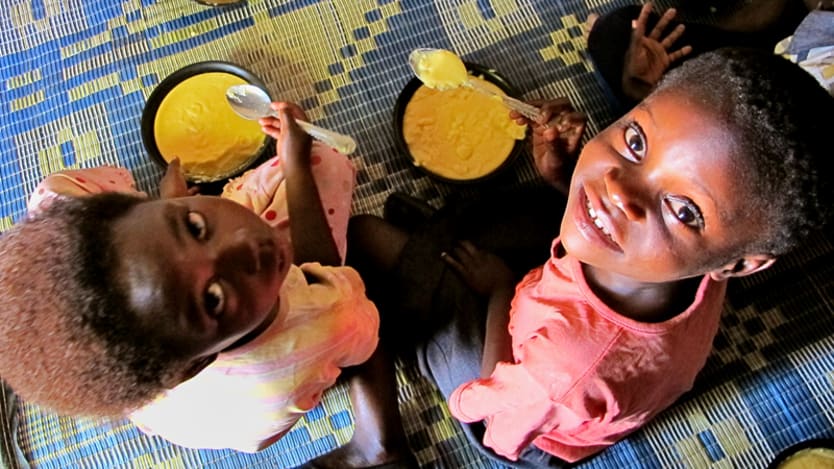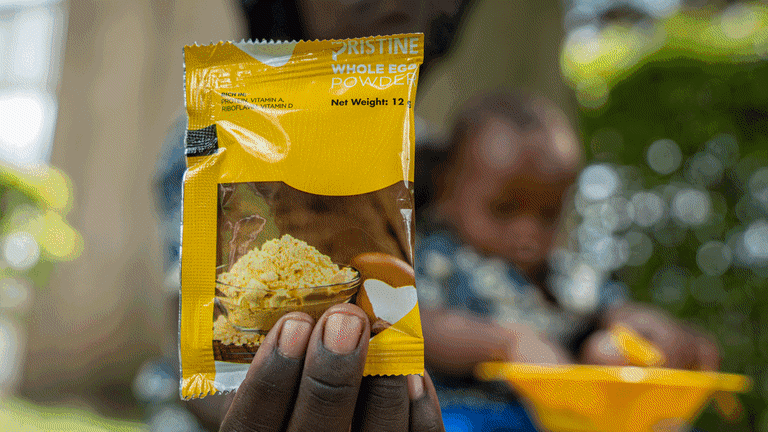
There are few things more global in nature than food.
The challenge to feed more children healthful options — those filled with nutrients — is becoming increasingly more difficult. We often see the photos of the malnourished child in Kenya, in Pakistan and in other parts of developing world. This imagery is jarring, memorable and often difficult to see. Then there is the stark contrast of young people who are living off chips, sodas and candy bars. Both are nutrient-deficient. Both groups of children and adolescents need to be consuming more enriched meals regularly — both need to be fortified for the future.
When we talk about this hidden hunger — that is, the growing micronutrient deficiency crisis — we must first address it through the lens of the life course.
Nutrients are important at all stages of life. For women, it is especially important before, during and after childbirth. For example, consider all the benefits of vitamin A, which helps form and preserve skin, teeth and tissue. It promotes good vision and is important for breast-feeding and reproduction. Vitamin A supplementation can help reduce the risk of mother-to-child transmission of HIV.
In fact, the World Health Organization has guidelines on vitamin A supplementation during pregnancy, in the first five months of life, for infants and children 6-59 months, and in postpartum women. And yet vitamin A deficiency, or VAD, is the leading cause of preventable blindness in children. In pregnant women, the deficit leads to night blindness and may raise the risk of maternal mortality. Even more frightful are the statistics — 250 million preschool children are vitamin A deficient. It is estimated that 250,000 to 500,000 VAD children become blind annually, and half of them die within a year of losing their sight.
In my own country, we have seen incredible progress on several fronts — Pakistan is on the verge of eliminating polio. However, there is still much to be done. In South Asia, 44 to 50 percent of preschool children suffer from severe VAD. The deficit is so serious that it has been declared a country with “severe subclinical deficiency.”
Micronutrient deficiencies can cause irreversible damage to a child's physical and mental development. #FutureFortified is a new global effort to end hidden hunger through the scale up of a cost-effective, proven intervention, GAIN Executive Director Marc Van Ameringen writes in this commentary.
In Pakistan, the nutrition situation is like a national emergency. According to the most recent figures issued from the nutrition director at the Ministry of Health, the current state of malnutrition in the country is around 44 percent in children under the age of 5. About 30 percent of children are suffering from acute malnutrition as well, putting them at a very high risk of dying from any infection.
In recent years, these situations have been made worse by natural disasters, such as floods and earthquakes. The exclusive breast-feeding rates in the country are about 37 percent, which is much lower than even the neighboring countries with similar conditions. Meanwhile, 41 percent of mothers bottle feed their babies, which is again a far higher ratio than desired.
Although the interventions to combat poor nutrition are well-known globally, with most strategies already validated in other countries, they are not yet enforced in Pakistan. Most of these interventions, such as food fortifications, are highly cost effective so poverty is no barrier to their implementation. It is the lack of political will that results in lack of improvement.
As a pediatrician and child health advocate, it’s these avoidable scarcities that scare me the most. In an ideal world, every mother, infant, child and adolescent would have access to the food that are rich in vitamin A — food like apricots, sweet potatoes, carrots, broccoli, eggs and cheese. In reality, we must use alternative techniques like nutrient fortification to slash these deficiencies in half, then in half again, until they are no longer a public health emergency.
We need to not only support the great work of organizations, but we must also advocate for additional funding from governments, build partnerships with the private sector, and urge U.N. member states to prioritize nutrition agendas. NCD Child Advisory Council — a global multistakeholder coalition championing the rights and needs of children, adolescents and young people who are living with, at risk of developing, or affected by noncommunicable diseases — will continue to advocate on behalf of and with young people with the hope of minimizing malnutrition.
Vitamin A is one of several nutrients needed for young people to live, grow, flourish and see the world. We are all looking with great enthusiasm and expectation for the upcoming global summit in Tanzania about food fortification to fight the hidden hunger. These are the most cost-effective and efficient methods of overcoming dangers of micronutrient deficiencies. Developing global strategies — and implementing and upscaling the already existing strategies with proven benefits — is the way forward to fight the menace of malnutrition around the world.
Future Fortified is a special online series exploring the impact and importance of food fortification to meet global development objectives. Join Devex — and our partner GAIN — in the conversation using #FutureFortified.




